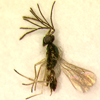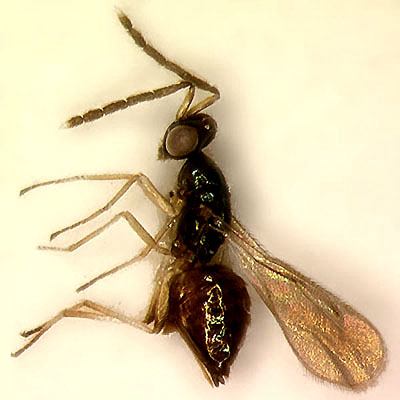 |
|||||||||||||||||||||||||||||||||||||||||||||||||||||||||||||||||||||||||||||||||||||||||||||||
|
|
Home | Open the Key | References | ||||||||||||||||||||||||||||||||||||||||||||||||||||||||||||||||||||||||||||||||||||||||||||
|
Hemiptarsenus Westwood, 1833 |
|||||||||||||||||||||||||||||||||||||||||||||||||||||||||||||||||||||||||||||||||||||||||||||||
|
|||||||||||||||||||||||||||||||||||||||||||||||||||||||||||||||||||||||||||||||||||||||||||||||
Classification
|
|||||||||||||||||||||||||||||||||||||||||||||||||||||||||||||||||||||||||||||||||||||||||||||||
Subfamily Tribe |
|||||||||||||||||||||||||||||||||||||||||||||||||||||||||||||||||||||||||||||||||||||||||||||||
Diagnosis
|
|||||||||||||||||||||||||||||||||||||||||||||||||||||||||||||||||||||||||||||||||||||||||||||||
|
|
||||||||||||||||||||||||||||||||||||||||||||||||||||||||||||||||||||||||||||||||||||||||||||||
| |
|||||||||||||||||||||||||||||||||||||||||||||||||||||||||||||||||||||||||||||||||||||||||||||||
Distribution |
|||||||||||||||||||||||||||||||||||||||||||||||||||||||||||||||||||||||||||||||||||||||||||||||
|
This genus was recorded in Afrotropics, Australasian, Holarctic and Oriental regions (Noyes, 2001). |
|||||||||||||||||||||||||||||||||||||||||||||||||||||||||||||||||||||||||||||||||||||||||||||||
| |
|||||||||||||||||||||||||||||||||||||||||||||||||||||||||||||||||||||||||||||||||||||||||||||||
Biology |
|||||||||||||||||||||||||||||||||||||||||||||||||||||||||||||||||||||||||||||||||||||||||||||||
|
The species of this genus are mainly larval
ectoparasitoids of leafmining Diptera. Among these, H. varicornis
(Girault) is one of the most common Liriomyza Mik (Agromyzidae)
parasitoids in the Australasian region (Shepard
et al., 1998; Sivapragasam
et al., 1999).
Other hosts, which partly include leafminers of different orders, are: Diptera (Hydrellia Robineau-Desvoidy), Homoptera Coccidae (Eriopeltis Signoret), Lepidoptera (Bucculatrix Zeller, Ectoedemia Busck, Elachista Treitschke, Gortyna Ochsenheimer, Leucoptera Hubner, Mompha Hubner, Ostrinia Hubner, Parafomoria Borkowski, Phyllonorycter Hubner, Prays Hubner, Stagmatophora Herrich-Schaffer, Stigmella Schrank, Trifurcula Zeller), Coleoptera (Blastophagus Eichhoff, Ceutorhynchus Germar, Hypurus Rey, Rhamphus Schellenberg) and Hymenoptera (Heterarthrus Rietter) (Zhu et al., 2000a; Noyes, 2001). |
|||||||||||||||||||||||||||||||||||||||||||||||||||||||||||||||||||||||||||||||||||||||||||||||
| |
|||||||||||||||||||||||||||||||||||||||||||||||||||||||||||||||||||||||||||||||||||||||||||||||
| |
|||||||||||||||||||||||||||||||||||||||||||||||||||||||||||||||||||||||||||||||||||||||||||||||
Comments |
|||||||||||||||||||||||||||||||||||||||||||||||||||||||||||||||||||||||||||||||||||||||||||||||
|
Hemiptarsenus belongs to the tribe
of Eulophini by having funicle 4
segmented, propleura meeting posteriorly and covering prosternum,
2 pairs of scutellar setae and 3 or more setae on submarginal
vein.
It can be distinguished from about half the Eulophini genera (those previously classified in the Elachertini, such as Stenomesius) by lacking complete notauli. Other genera, either considered or not in this key, which are in the Eulophini and close to Hemiptarsenus are: Dahlbominus Hincks, Necremnus Thomson, Notanisomorphella Girault, Pnigalio and Ratzeburgiola, and Dicladocerus. Hemiptarsenus may be recognised from all of them by having scape distinctly exceeding apex of vertex. This character is also useful to distinguish Hemiptarsenus from Sympiesis, which is likely its closest relative. Moreover, Dahlbominus has a shorter postmarginal vein (1.7 or less than stigmal vein) and a complete median carina; Necremnus has a female funicle 3-segmented and a shorter postmarginal vein (1-1.5x stigmal vein length); Ratzeburgiola and Pnigalio have plicae and costula on propodeum; Ratzeburgiola has also longitudinal lines on scutellum; Notanisomorphella has distinct median carina and steplike plicae. Keys to the genus Hemiptarsenus are available for the European (Boucek, 1959), Indian (Shafee & Rizvi, 1988) and Chinese species (Zhu et al., 2000a). |
|||||||||||||||||||||||||||||||||||||||||||||||||||||||||||||||||||||||||||||||||||||||||||||||



